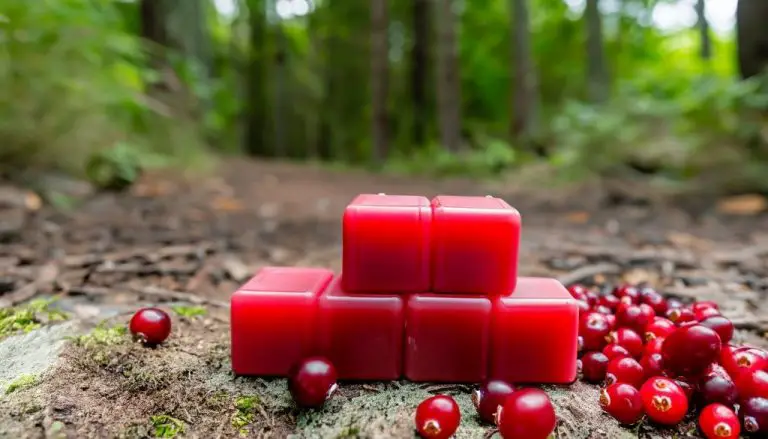Are Candles Still Made With Animal Fat?
Candles have been used for lighting and religious ceremonies for thousands of years, dating back to ancient Egypt, Rome and China. For most of history, candles were made from animal fats, also known as tallow. Tallow candles were the primary source of artificial lighting in homes and businesses prior to the invention of gas lighting in the 1800s. Rendered animal fat provided an inexpensive and widely available fuel source for candle making across many cultures.
The earliest Western candlemakers used tallow derived from beef or mutton fat. Beeswax candles were also used but were expensive and mainly reserved for churches and the wealthy. Tallow remained the primary candlemaking material in Europe and Colonial America through the early 1900s. The consistency of animal fat enabled it to harden into a long-burning candle. However, tallow candles produced more smoke and odor compared to modern paraffin wax candles.
Traditional Tallow Candles
Tallow is a rendered form of animal fat that has been used historically to make candles. Tallow is produced by rendering the fatty tissue of cows and sheep – most commonly from beef or mutton fat (Petroleum Refiner Including Oil and Gas News). Before the mid-1800s, tallow candles were the most common type of candle. Tallow candles were made by melting tallow into liquid fat and then pouring it into a candle mold with a wick. As the tallow cooled, it hardened into the shape of the mold. This created a slow-burning candle that was inexpensive to produce. Tallow candles were used for centuries to provide light in homes before the invention of wax and paraffin candles (Practical Hints to unpractised lecturers to the working…). The smoky flame and unpleasant smell of tallow candles were major drawbacks, but the low cost and ready availability of animal fats made them the dominant type of candle before modern manufacturing.
Modern Candlemaking
Today, most candles are made from paraffin wax, a petroleum byproduct. Paraffin wax was discovered in 1830 and began being used for candlemaking in the 1850s. It had several advantages over animal tallow:
- It burned longer and brighter than tallow candles.
- It was odorless and smokeless compared to animal fats.
- It was cheaper to produce than harvesting animal fats.
Paraffin wax quickly became the dominant candlemaking ingredient by the early 1900s.[1] Other types of waxes emerged as well, like beeswax and soy wax. Synthetic waxes offered many benefits over animal tallow:
- They burn cleaner and are less smokey.
- They have no smell, unlike the faint meaty aroma of tallow.
- They are generally cheaper than animal fats.
- They are not reliant on animal agriculture.
Today, the majority of candles are made from paraffin, soy, or beeswax. The use of animal fats like tallow is now rare in commercial candlemaking.
Vegetable-Based Alternatives
In modern candlemaking, animal-based tallow has largely been replaced by vegetable-based waxes. The most common plant-based waxes used today include:

Soy wax – Made from hydrogenated soybean oil, soy wax burns cleanly and holds scent well. It’s a popular eco-friendly option, though some raise concerns over its environmental impact as soybean farming expands (Amazon.com: Vegetable Wax).
Palm wax – Derived from palm oil, palm wax provides excellent scent throw and a smooth appearance. However, its production has raised ecological concerns around palm oil farming and deforestation (Making Vegetable Wax Candles | Lisa Samuel).
Beeswax – Made by honey bees, natural beeswax has a honey-like scent. It’s biodegradable and renewable. However, availability is limited as production depends on bee populations (Cinnamon Blackberry Candle).
These vegetable-based waxes allow candlemakers to avoid animal products. But each comes with its own ethical and environmental considerations around sustainability and harvesting practices.
Animal Fats Today
Though traditional animal-based fats like tallow were once ubiquitous for candlemaking, they have become limited to niche uses in modern times. Tallow and other animal fats remain in use by some artisanal candlemakers, but make up only a small fraction of overall candle manufacturing today.
Certain high-end candle brands position their tallow candles as premium offerings, touting qualities like a warm glow, nostalgic scent, and natural source. These tallow candles cater to a niche market interested in historical methods and natural ingredients. However, the vast majority of candlemaking has shifted to using vegetable-based waxes like soy, palm, and beeswax.
Animal fats do offer some benefits like a low melting point and attractive finish, but modern manufacturing trends prefer the cost-efficiency, performance, and perceived ethical advantages of vegetable waxes. While tallow and other animal fats are still utilized in small batches, their use in candlemaking is now primarily an artisanal pursuit rather than a major industry staple.
Manufacturing Trends
Although animal-based tallow was once the primary ingredient in candlemaking, most commercial candles today use paraffin wax, a petroleum byproduct. According to 2017 data from the National Candle Association, approximately 90% of candles sold in the United States are made from paraffin wax. The remaining 10% use vegetable-based waxes such as soy, palm, or beeswax.
The use of tallow and other animal fats in candlemaking has significantly declined over the past century. In the early 1900s, nearly all candles were made from tallow or whale fat. But the rise of paraffin wax changed the industry. Paraffin wax was cheaper to produce, burned cleaner, and was more consistent in quality. This caused a major shift away from animal-based waxes.
Today, candles made from beef or mutton tallow make up less than 1% of the market. The majority are sold as novelty or decorative items, marketed as traditional or vintage-style candles. While some artisanal candlemakers may still use small batches of tallow, it is not common in large-scale commercial production. The industry has overwhelmingly favored paraffin and vegetable-based waxes which are more economical and sustainable.
Environmental Impacts
When evaluating the sustainability of different candle waxes, some key factors to consider are the source of the wax, manufacturing processes, and disposal impacts. Traditional paraffin wax is a byproduct of petroleum refining, so it relies on fossil fuels. Manufacturing paraffin also produces more carbon emissions compared to plant-based waxes.
Alternatives like soy wax and coconut wax have a smaller carbon footprint since they are sourced from renewable crops. Coconut wax, for example, comes from coconut oil production so no extra farming is required. As highlighted on the Highland Candle Company website, coconut wax is also non-GMO which avoids genetically modified crops [1].
When burned, soy and coconut wax candles release carbon dioxide but this is from recently absorbed carbon rather than fossil fuels. On disposal, plant-based waxes are also more biodegradable than paraffin. Overall, natural waxes have environmental advantages over paraffin in terms of sourcing, production, and end-of-life impacts.
Cost Differences
There are some key cost differences between traditional animal fat candles and modern vegetable wax candles. Animal fats like tallow and beeswax have historically been inexpensive, abundant raw materials for candlemaking. Tallow could be obtained as a byproduct of meat production, making it a very accessible candle ingredient. However, the supply of animal fats today is much more limited, which has driven up costs. Large-scale harvesting of beeswax is also not as common anymore.
In contrast, vegetable waxes like soy, palm and coconut oils are mass produced as cooking oils. The waxes are extracted during food processing, creating a plentiful and affordable wax supply. Soy wax in particular can be grown and harvested using highly efficient industrial farming techniques, keeping costs low. When comparing soy wax versus beeswax pricing today, soy wax is generally the more budget friendly option. Palm wax is also very economical. The abundance of vegetable oils has allowed candle manufacturers to transition away from scarce animal fats.
While tallow and beeswax candles carry more prestige and command higher prices, most consumers today opt for the lower cost and ethical advantages of vegetable-based waxes. The pricing differences allow vegetable wax candles to dominate the market in terms of affordability and availability.
Quality Comparisons
When comparing the quality of different candle waxes, three key factors are burn time, scent throw, and appearance.
In terms of burn time, beeswax and paraffin wax tend to burn the longest, often 50-60 hours or more for a 6 oz candle. Soy wax and vegetable waxes have slightly shorter burn times around 40-50 hours. Coconut wax burns the shortest at around 30-40 hours (source).
For scent throw, paraffin wax is frequently noted as having the strongest hot and cold scent throw as it releases fragrance oils efficiently. Beeswax and soy wax follow behind. Vegetable waxes like palm and coconut oil have lighter scent diffusion (source).
In terms of appearance, paraffin wax tends to have the smoothest look when burning with a nice glassy pool. Beeswax and soy wax have more textured melts. Vegetable waxes can get “sooty” burns with more black smoke.
Overall, paraffin often rates highest in burn time and scent throw but has environmental concerns. Beeswax and soy rank next for quality across factors. Vegetable waxes lag behind in performance but are renewable and eco-friendly.
Conclusion
In summary, the use of animal fats in candlemaking has declined significantly over the past few decades. While tallow candles were once very common, most candles today are made from paraffin wax or vegetable-based waxes like soy, palm, or beeswax according to Candles by Luma. This shift away from animal-derived ingredients is driven by several factors:
– Increased availability and affordability of vegetable-based waxes
– Growing ethical concerns over using animal byproducts
– Preference for fragrances made from essential oils rather than animal fats
– Perception that vegetable waxes burn cleaner
While some specialty candlemakers may still use small batches of tallow, the majority of mass-market candles today are free of animal fats. Consumers looking to avoid animal ingredients can find many high-quality vegan options made from soy, coconut, palm, or beeswax. So in conclusion, the use of animal fats in modern candlemaking has declined significantly, though they are still used in small quantities by some traditional or boutique candlemakers.






